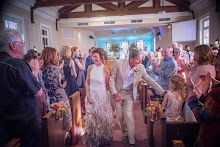Thursday, June 22: Learning by discovery
LEARNING BY DISCOVERY
A baby doesn’t have a plan: by six months I’ll learn to roll over and begin to crawl. Most times the child doesn’t even see crawling. All the giants are doing the walking thing, which is just some part of the world to the child, like trees and walls. It has no idea it might walk, or crawl or roll over or sit up someday. But the child loves to learn, loves to experiment and comes equipped with a brain whose main job is to make order out of chaos, to make sense out of nonsense, to discover ways of moving that bring that baby a more interesting and satisfying life. Hands and arms wave around, and suddenly, a hand gets to the mouth. The second time this happens, it is no longer chance and learning takes place and all sorts of possibilities open up: fingers to chew, stuff to bring to the mouth, lips to wiggle, sounds to play with, who knows, when learning takes place, the skies the limit.
Same with this Feldenkrais work. You won’t be taught the “right” way to do anything, unless you have a poor teacher, and there aren’t many. You will be given opportunity after opportunity to discover ways of moving that are natural and clear and pleasurable.
In my work, the goal is to extend this learning to learning how to live happily in the present and how to wake up into the moment, and how to connect with nature and how to have wonderful relationships, whether the relationships lasts forever up to death, or whether it transforms into another status: it’s always possible to have wonderful communication. And what’s stopping us, is always the same thing: unconscious habits, inability to slow down and try something other than the rut we are in, a stuckness in wanting to be right instead of being excited to learn.
So let’s play with a couple of examples of learning, and discovering the blueprint of how we, as a species, evolved to move gracefully and pleasurably and efficiently, where efficiency isn’t some robot kind of thing ( it is out of robot-land that I focus the meaning of my work), but less effort, no wasted energy, a smooth path of action, which is why this sort of efficient blends over into pleasure: it feels great to do something as we are meant to move.
ROTATION. As you sit or stand, or even lie on you back, extend your arm, either arm, forward from your shoulder. Begin to think of moving the hand farther forward and then bringing it back. How do you imagine doing this? Then try this experiment: begin moving your hand forward and back, and think about this as moving first your hand forward and back., and then think of moving your elbow forward and back, and then think of moving your shoulder forward and back. Take lots of rests, don’t tire yourself. Go slowly, so you can really sense and feel and enjoy this simple movement. Now try this movement, thinking of rotating your ribs as the source of the action. Then rest and notice the difference in the side you moved and your other side.
Now try this. As you move this same arm forward and back to the starting place, turn your head three times to one side, and three times to the other. For example, if you are moving your right arm forward, go back and forth with three times as you do this, turning your head to the right, and three times turning your head to the left. See which seems to make the action easier, and which makes it a bit more difficult. Again, slowly do this, and pay attention to what is happening in all of you, in your breathing and your ribs and your legs and your feet. Bring all of you into awareness, as a gift to your presence, and as a chance to learn more about how you function. Rest. And again compare sides and arms. The brain loves to learn and noticing differences is how it learns, how we learn.
Now try this: Discover how to move the same side hip forward as the arm you have been moving forward. For example, if you have been moving your right arm forward, move your right knee forward so you can feel your right hip come forward and your pelvis swivel a little on your chair as the right side of your pelvis comes forward. Without the arm doing anything, experiment and enjoy this moving of your hip and pelvis forward. Now combine this hip moving forward with moving your arm forward. How does that help or hinder the action? For contrast, move the other hip and knee forward as you move your arm forward and see what that does. Notice the difference. Go slowly. Let learning take place. Get fascinated in this. Sometimes you move the same arm and hip forward, sometimes the opposite hip and arm. Notice what happens in your spine and your ribs and how far your arm can easily move forward. You are the laboratory. You are in the present. This is simple and simply delightful to take this chance to learn about actions we do every day; reaching forward in life for something.
Experiment. Learn. Enjoy. This is our birthright, to be present, to find more pleasant ways to be, to discover how we are meant to move easily and freely, to discover how we learn by noticing differences, to discover what helps create a sense of ease in us. Ease as opposed to dis-ease. Ease and delight, a great combo.






0 Comments:
Post a Comment
Subscribe to Post Comments [Atom]
<< Home